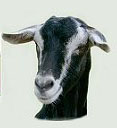Home
Pictures
Horses
Ponies
Horse Training Information
How to Train a Horse
Horseback Riding
Riding Styles
Riding History
Horse Health
Horse Behavior
Horse Colors and Markings
Horse & Pony Breeds
Mixed Breeds
Horse Types
Getting your first horse or pony
Horse Facts
Horse Farrier
Horse Floater
Horse Tack and Supplies
Assateauge Island
Budweiser
Cats & Rats
Cloverleaf Stables
Brandywine Horse Club
Farm Animals
Horse Music Videos
Silly Animals
Vacation Riding
Site Updates
Privacy Policy

Maguire Farm
HorsesWithAmie

|
Picture(s) needed
Please do NOT send pictures out of books, magazines, or off other websites unless you own the rights to the photo.

Shire
| History |
Descended from England's mediaeval warhorse known as the Great Horse, which was later called the English Black, was England's most magnificent looking heavy horse. Developed by crossing imported Flanders and Friesian horses with native stock to produce a military mount first and then a farm and general draught horse. The introduction of the term 'blacks' for these heavy horses is attributed to oliver Cromwell, and was probably used originally to describe the imported Friesians, which are always black in color. The Fen country was the main breeding area for the English Black and the Midland shires of Leicestershire, Lincolnshire, Derbyshire and Staffordshire, from which the breed eventually took its name. Early on the breed showed regional variations, horses bred in the Fens tending to be bigger, heavier and somewhat coarser than those from the "shires". Derbyshire and Leicestershire produced predominantly black horses and Staffordshire horses were more often brown. Around the late nineteenth century is when the breeding of these horses became formalized, as a result of he publication of the first stud book. A breed society was set up in 1878 under the title of the Old English Cart Horse Society. In 1884 the name was changed to Shire Horse Society and the breed has ben known the Shire ever since. After the formation of the breed society the Shire went from strength to strength competing with great success in the leading agricultural shows of the time and attracting the interest of foreign buyers. Shire horses were soon being exported as far as North and South America, Russia, and Australia. They also became a big part of life in Britain. With there qualities of strength, stamina, soundness and good temperament, these gentle horses could be seen plowing land, hauling timber and pulling farm wagons, railway vans, brewers drays and coal carts. You can still see these horses today plowing land and pulling brewers drays on short haul routines in cities. |
| Conformation |
Lean head (not to big not to small), wide between the eyes, slightly Roman nose, large, predominant and long, lean, sharp, sensitive ears; fairly, long, slightly arched neck; deep, oblique shoulders, wide enough to support a collar; short, strong, muscular back, broad chest and wide, sweeping, muscular hindquarters with well let-down thighs; clean hard limbs with 11-12 inches (28-30cm) of bone and broad, deep, flat hocks, set at the correct angle for leverage; fine, straight, silky feather; deep solid feet with thick walls and open coronets. |
| Height |
Stallions 16.2-17.2, Mares 16-17hh
(hh= Hands High, one hand is 4 inches) |
| Color |
black, brown, bay or gray |
Back to Horse Breeds
|
|

